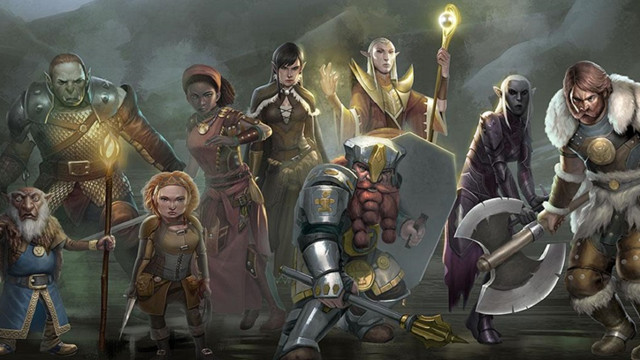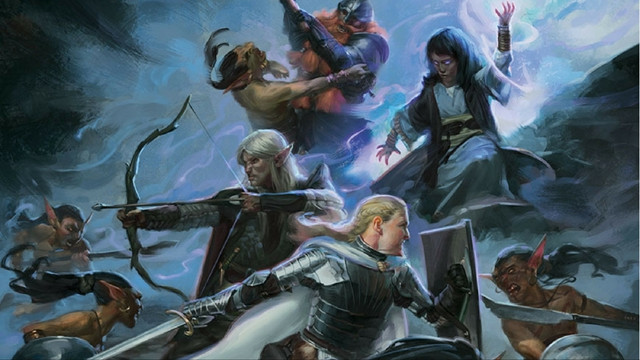“Exploring dungeons, overcoming obstacles, and slaying monsters are key parts of D&D adventures. No less important, though, are the social interactions that adventurers have with other inhabitants of the world.”
That paragraph in the Player’s Handbook (Social Interaction, pg. 185) leads into the topic of roleplaying, and the two approaches the D&D system divides the act into descriptive and active. Both the D&D Player’s Handbook and Dungeon Master’s Guide mention roleplay (RP) as it applies to social interactions, those interactions not involving combat. However, RP should not be limited to only instances when PCs meet and greet NPCs. In fact, descriptive and active approaches to RP during combat can develop and demonstrate a character’s physicality and personality just as vividly as any non-combat social interaction.
DESCRIPTIVE APPROACH
The PHB considers the descriptive approach to be you describing “your character’s words and actions to the DM and the other players”, along with telling them “what your character does and how he or she does it.” Describing these same activities during combat interactions is just as simple as describing them in social interactions – if you have the imagination for one, you also have it for the other.
The descriptive approach to RP during combat is the difference between simply saying, “My character attacks”, and describing your character’s attack by saying something like, “Jhelom flourishes his long blade in front of him as he quickly advances on the kobold, then spins to his left and attacks the kobold on its non-shield side.”
Even that example is a mild depiction of descriptive RP in combat. Just as in social interactions, descriptive RP in combat is a chance to take your RP as deep as you want, to bring into focus your character’s stats, race and class traits, and any physical, personality, and background details (ideals, bonds, and flaws) that you see fit.
For instance, use descriptive RP to play up the differences in how and where a short character attacks an enemy in comparison to how a tall character would. Also use it to illustrate the comparative differences with your character being stronger than they are faster, more intelligent than they are wise, and even when severely injured rather than at full health. Acutely imagine watching your character during combat, then describe to your group what they look and sound like.
ACTIVE APPROACH
The active approach (PHB pg. 186) “is more immersive than descriptive roleplaying,” and involves showing your character’s actions from a first-person point-of-view.
This approach to RP is better described in the DMG in the Roleplaying section on pages 246-246. Though the topic is aimed at the DM roleplaying NPCs, the key factors (being the [character], using your voice, using your [body language], and engaging players) may be applied equally to PCs.
Being the character means being in-character (IC), and includes using your voice to speak as your character does (accent, dialect, foreign language) and using your body language to portray your character’s physicality. Basically, taking on the role of your character much like an actor takes on their roles. And again, use your character sheet info to help guide you in actively depicting everything about them, including their armor, weapons, equipment, trinkets, and anything else they make use of during combat, or that you feel important to their being.
Spellcasting is especially open to the active RP approach during combat, in that they are cast using material, somatic, and/or verbal components (PHB pg. 203). Many material spell components (or their likenesses) can be found in real life at hobby stores, thrift stores, yard sales, and such places. Somatic components (hand gestures) and verbal components (‘magic words’) can be borrowed from video games, books, movies, cosplayers, nerdy ass voice actor shows – multiple places. You may not want to take it all the way up to LARP level (not that that’s a bad thing!), but having two or three real-life items or actions will help you and your group see your character in a quality light.
Roleplaying make-believe characters through make-believe adventures is the very heart of D&D and other RPGs. Limiting the RP fun to everything except combat will extremely diminish the adventure experience, and that’s just not what we game for. Make roleplaying work for you in and out of combat!
Article plucked from: https://geekandsundry.com/new-rpg-players-the-basics-on-using-descriptive-and-active-roleplay-in-combat/



Be the first to comment on "The Basics On Using Descriptive And Active Role-playing In Combat"